For years we’ve been growing various types of true yams (Dioscorea spp.)
This year we had a good harvest of roots and have been able to share some of them with others. On Sunday we gave a couple of purple ube yams to a Filipino friend who was amazed to see that we’d grown them ourselves.
Here’s a pile of yams we harvested some years ago:
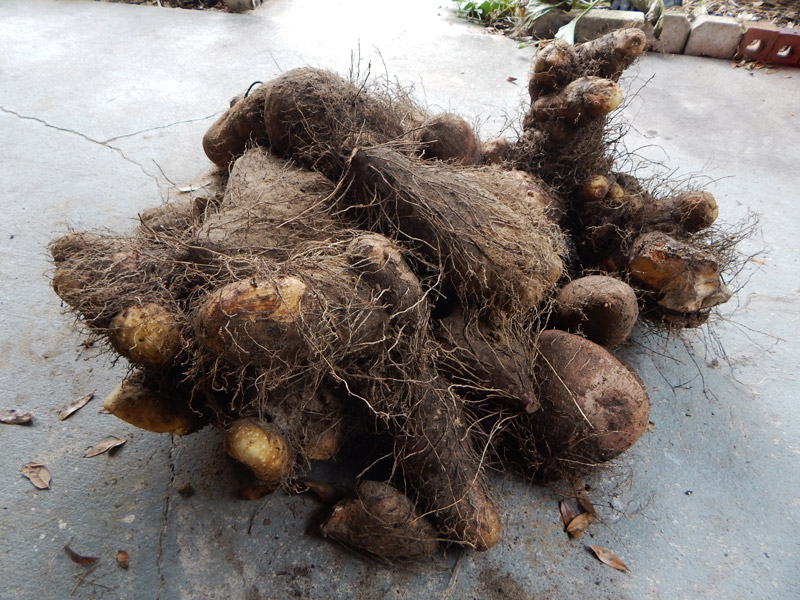
We have more than that sitting in a pile on our porch right now… and we haven’t even dug them all.
Yams are Easy Calories
Those big, root-covered tubers are a lot of calories gained for very little work. The biggest effort is raising the yam hills and then planting and later staking the yams.
This is how Grenadians make yam hills:
If you were to till with a tractor and use a bedmaker, it would be really easy, yet we don’t have that kind of a setup here right now so we just make a long bed and plant it.
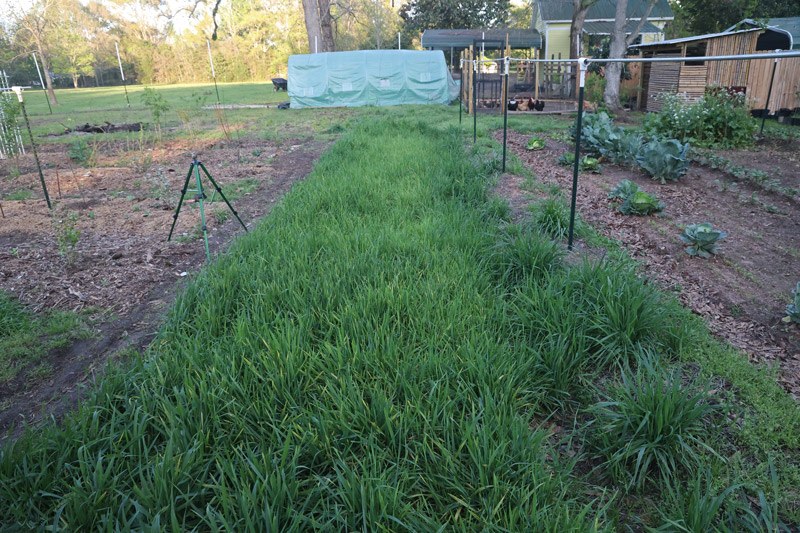
That trellis to the right of the wheat is one of our yam beds from this year.
Our yams have had no pest or disease issues and are easy to grow, making them a very good survival crop, as I cover in Florida Survival Gardening, Totally Crazy Easy Florida Gardening, and in the new, massively expanded and illustrated 2nd edition of Create your Own Florida Food Forest.
The yields are decent, too, especially if you start by planting larger pieces. You can make a lot more plants by using smaller pieces via the minisett method or starting yams from cuttings or bulbils, but bigger yams grow from larger planting material.
The bulbils that grow on D. alata look like this:
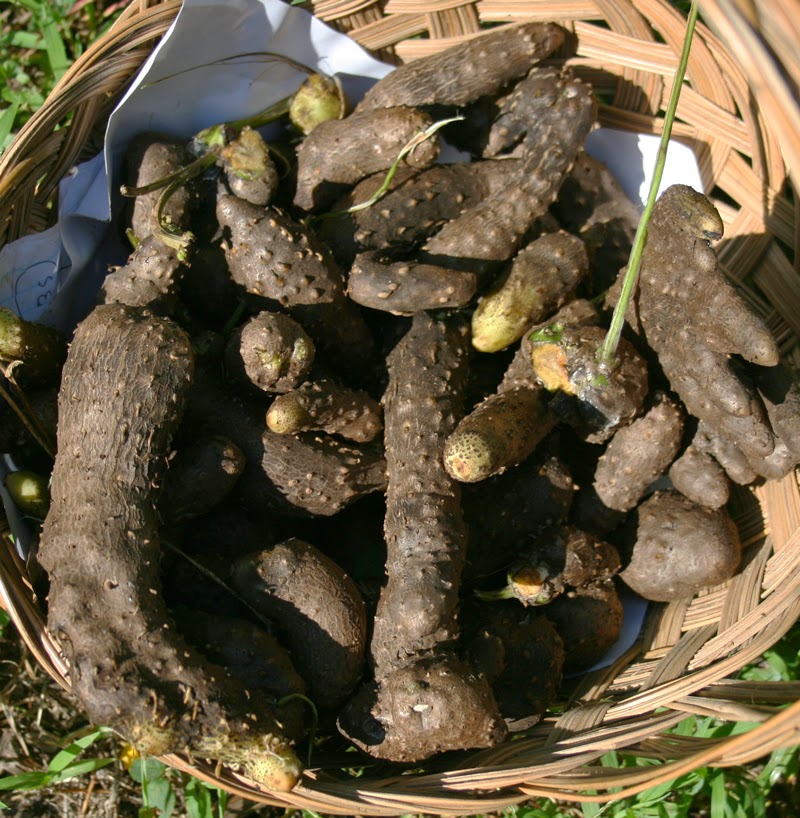
Larger ones grow into larger yams.
If you plant small bulbils or small pieces or cuttings, you’ll still grow yams, but they won’t be a good size and you’ll have to let them grow another year to get good-sized roots. Since yams are perennial, this is easy, so plant what you have and know that good things come to those who wait. This yam took two years to reach this size from a bulbil:
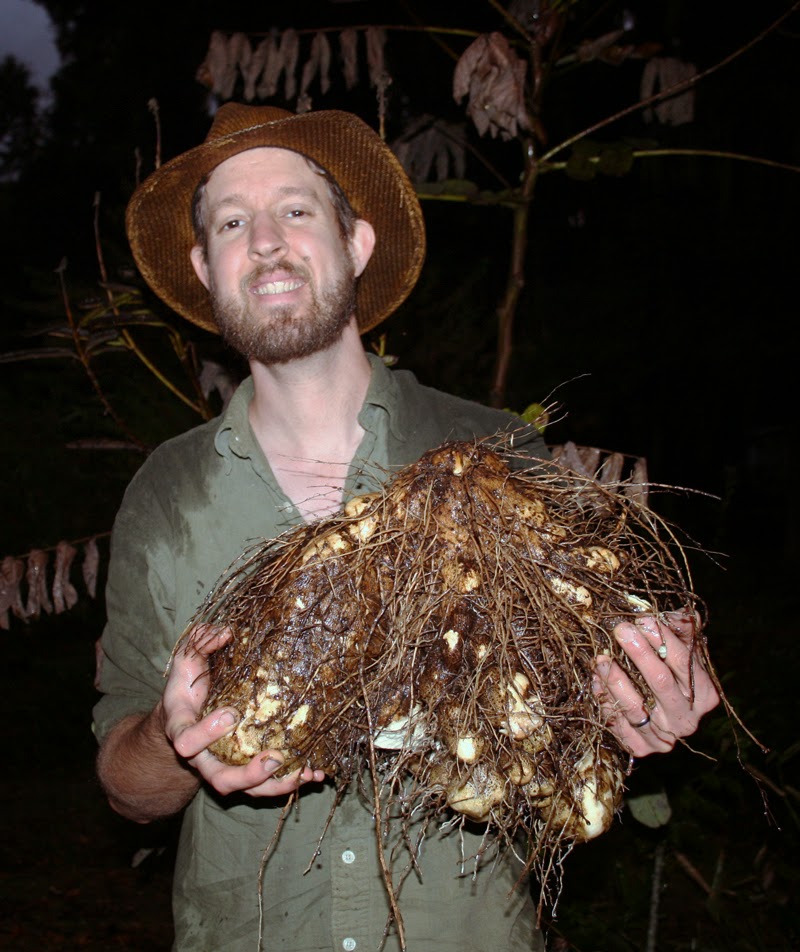
On the up side, it took almost no work to grow, since I just planted a bulbil at the base of a dogwood tree and ignored it for two years.
Yams Aren’t Sweet
Another benefit of true yams is that they’re starchy, not sweet, making them an excellent stand-in for the common potato. You can boil them, mash them, and put them in a stew, just like a “normal” potato.
We made mashed yams for Thanksgiving one year as a substitute for mashed potatoes and a visiting friend couldn’t tell the difference.
Someone commented on YouTube the other day that “white sweet potatoes make a good substitute for regular white potatoes.”
This isn’t really true. They are still sweet, which is less useful than having something starchy. I don’t know about you, but I often get tired of sweet things and prefer to just eat white potatoes, cassava, yams, green bananas, etc., as a side with some meat.
Yams Have a Wide Growing Range
Though most yams are tropical, many can be pushed up into zone eight. Others, like the Chinese yam (D. polystachya) will grow all the way into zone five.
Name yams have grown well for us here, though their tubers haven’t kept through the winter, either in the ground or in storage.
Basically, you can grow some variety of true yam from the equator all the way up into the Midwestern United States.
Recently we got a new variety that we’re going to try, though it took us some time to track down what it was! You can read about our search for the name of that mystery root here.
Conclusion
Part of the joy of being a garden writer and teacher is learning about new plants and crops and new ways to grow them. Lately I’ve been watching a lot of YouTube videos from African yam farmers so we can improve our own harvests.
There are so many great plants out there that we’ll never get to the end of them, and that’s a great part of the fun of gardening.
If you haven’t tried growing yams, I highly recommend giving them a shot. There are lots of articles on the blog covering yams and other interesting crops. We’re up to 2,983 posts on The Survival Gardener so far.
In an era where most gardening sites are overrun with junky articles lacking info – or worse, written by AI (heyo, Sports Illustrated, we’re looking at you!) – this site is a place where we share real research and real tips for growing, not just re-hashed material from Wikipedia written to drive clicks.
We’ve been posting since 2012 and aren’t about to stop. This year we’ve managed to put up a gardening post for every weekday, and regularly answer the comments we get.
Thanks for sticking with us. Now go find some yams and plant ’em!

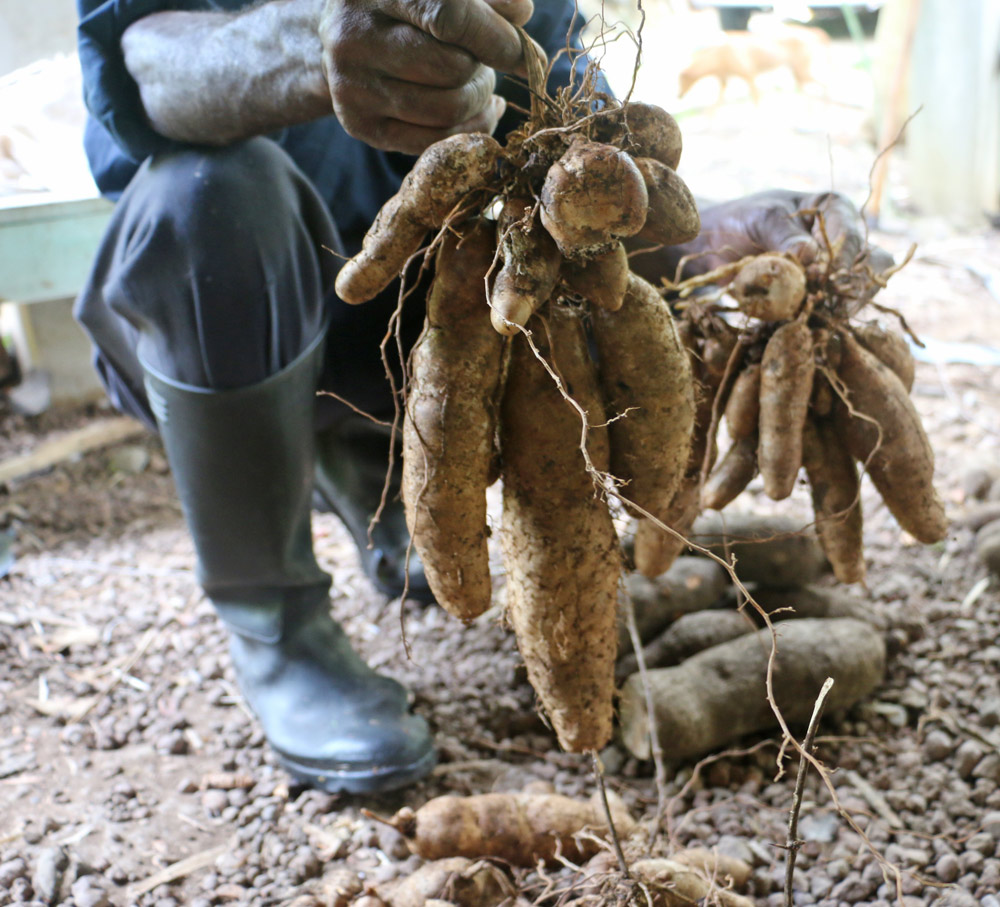
6 comments
We are snowbirds…taking our first ‘dip’ into Florida gardening (we are avid NC gardeners in the summertime)…I’m so glad I found your books and your site. I am so glad you are sharing what you have learned. I have been buying lots of FL gardening books; one I read last night will end up in my compost heap as a total waste of time and paper…yours will keep getting moved around as I continue to read and re-read them!! Again, thanks so much for putting the effort and time into sharing what you have actually done and learned!!
You had me at replacement for common potato! I like a little sweet potato OCCASIONALLY, but I love me a REAL potato. I will def need to look into getting some true yams!
Help!
Retired pre pandemic in the Florida mountains. Northern Walton County, elevation 300+ ft. Zone 8ish. Pine and cedar are the old established trees, some small hardwood and lots of Yukon Holly, wild grapes, poison ivy.
Have been unable to establish a productive garden/food forest on our 5A hobby farm/homestead.
Found your book this year and have started containerized in 5,10 and 20 gal fabric grow bag. With a small greenhouse and 400Sq tilled garden plot. Compost with chicken, goat, horse. Have been raking up and burning pine needles to reduce fire risk.
Lemmon trees died, mulberry and plum trees look sickly. 6 inch tall Fig trees still in pots in the greenhouse to plant this spring.
3 of the 5 acres are goat pens another acre is county road right away. Half of the remaining acre is full shade under larger old pines.
House, carport, pool, chicken house, greenhouse and garden make up the rest.
What am I doing wrong?
It’s a rough climate, and the soil in pine areas is terrible. I will try to do a proper post answering your questions tomorrow.
Just dug up an ube I planted last year. When I cut it had this gasoline/chemical smell. I boiled it up and some bites had that taste and some tasted beautifully floral. Have you experienced this? Is that normal? I checked your books and articles and there wasn’t any mention of it, unless I missed it…?
Thanks for all you do!
I have not had that happen. Very strange. I wonder why?
Comments are closed.